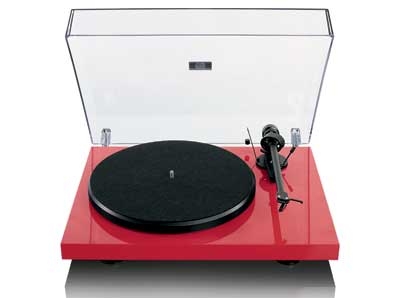Platter Matters: Three Turntables Page 2
Pro-Ject Debut III / Ortofon OM-5E
The Czech-built Debut III comes packaged as a complete system that's pretty much ready to go, with the tonearm and an Ortofon OM-5E moving-magnet phono cartridge installed and aligned. The OM-5E normally sells separately for about $50, and a nice feature is that you can upgrade it to one of the more senior members of the OM range in just a few seconds by swapping out the stylus. The supplied OM-5 stylus is a standard elliptical, while the OM-10, 20, and 30 styli offer progressively more refined profiles that should result in even better tracking and high-frequency detail.
For maximum value, the standard-model turntable ($299) comes in a rather utilitarian matte-black finish, but for an extra $30 you can get one of the snazzy, painted versions. Mine came in a striking fire-engine red, but a range of other bold colors is available. This is also the only one of our three turntables to include a dust cover.
For a budget model, the Debut III is impressive in both its overall look and its fit and finish. You can tell that everything has been carefully thought out - for example, from the way the motor is suspended on a rubber belt to reduce vibration transfer into the plinth - and when you consider nice little features like the azimuth adjustment on the tonearm, it's clear that the designers knew how to get the most from a fairly simple design. At 14 pounds, it's also quite substantially built, with a 3-pound steel platter to help smooth out any speed fluctuations.





























































